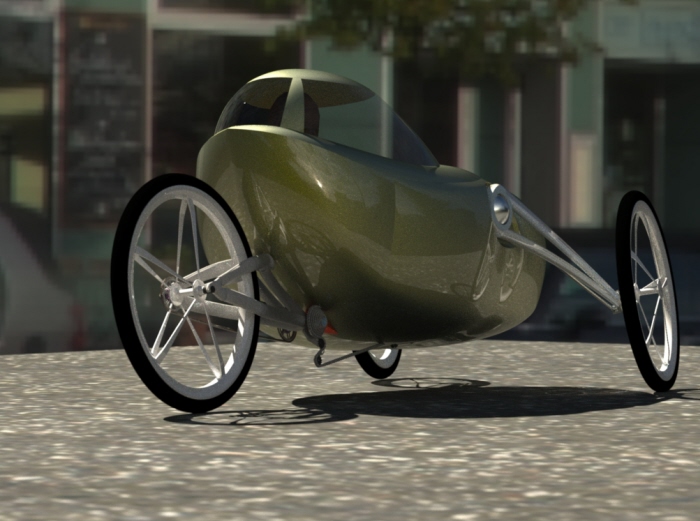
Rear Drive System - Because it has a long body shifting would become unresponsive using such a long stretch of chain. The derailleur was moved to the pivot of the rear swing arm and is set up much like a bottom bracket w/ suspension on a mountain bike but Instead of having pedals and a crank the cassette and belt drive pulley are attached in this location


Overall Size - The overall size is comparable to a small car at about 9' x 4-3/4' x 4'. This was done to improve visibility and blend in with other vehicles in the transportation grid.

Suspension Description - The suspension is a unique design with torsion springs inside pivot points of the control arms. This was intended to allow greater stability in turning by allowing the vehicle to lean into the corner.


Velomobile Redesign - As a bicycle rider I quickly realized that bicycles don't work well with other vehicles. The problem that I found was that bicycles do not fit into Americas current transport grid. The roads were built for cars, trucks and buses but not bicycles. I feel like we try to fix this by adding bike lanes but unless they are separated lanes it is only a bandage on the grid. This concept sets to question what if we make a velomobile larger, more agile and have it blend into the Urban/Suburban environment



Concept sketches

Panel placement - The construction consists of a steel tubular frame with replaceable ABS panels. This was done to solve the issue of a damaged fiberglass monocoque.


Frame
gLike